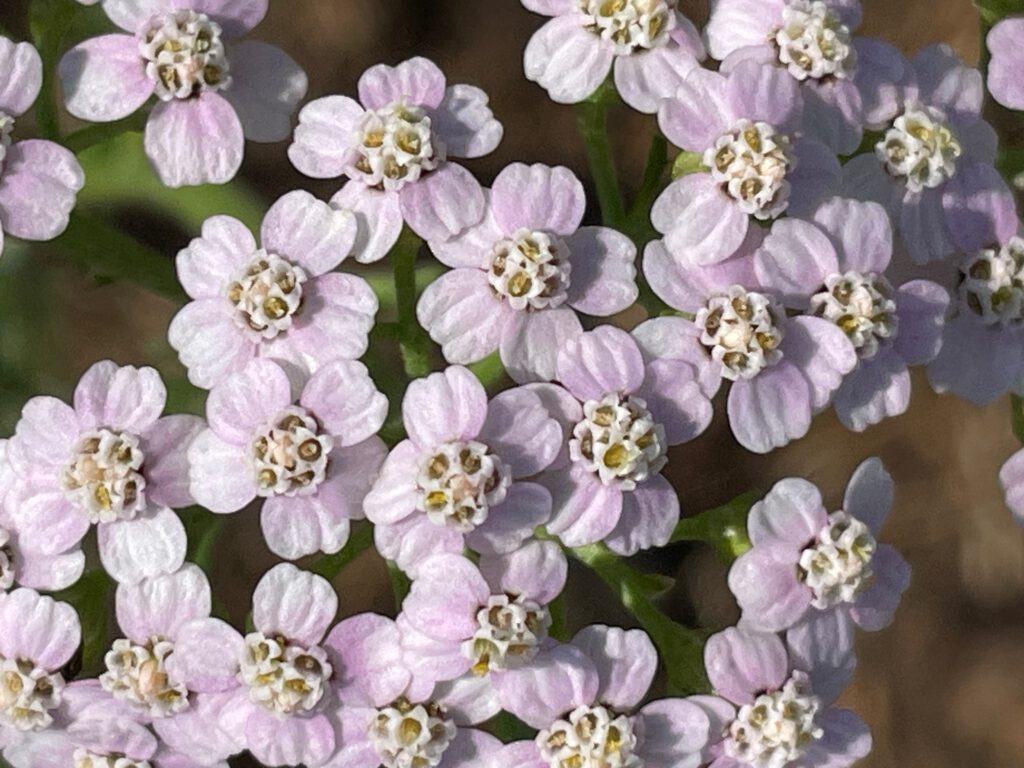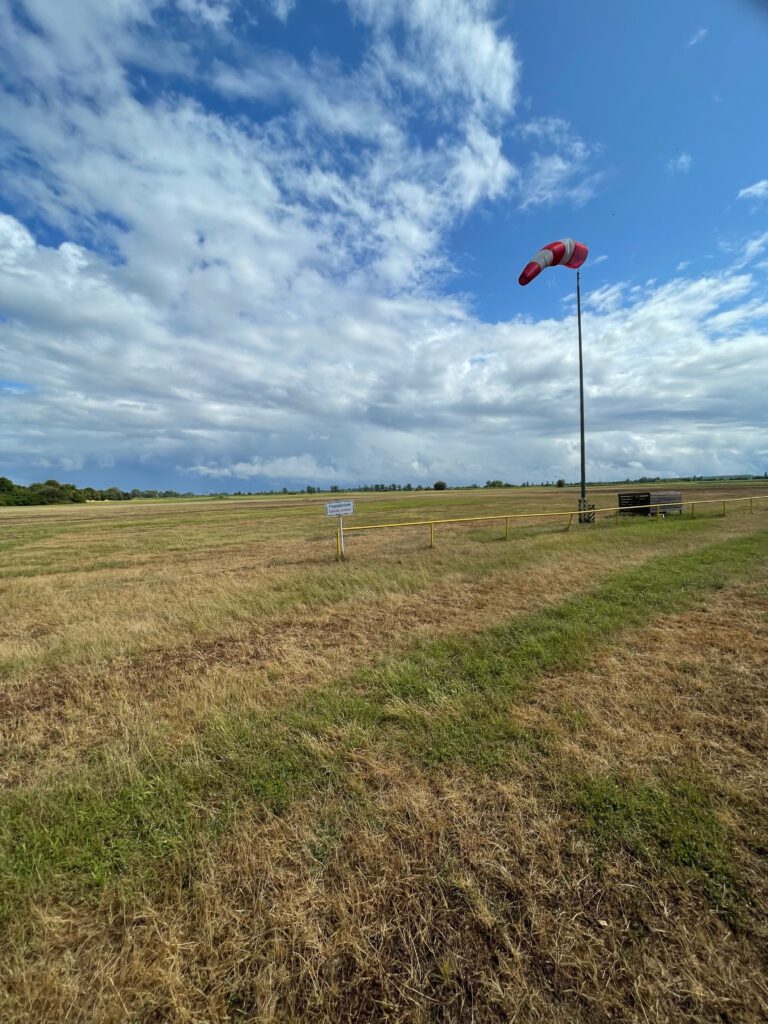Endangered: Rush Hair Grass (Deschampsia media)
Thanks to the tip, I was able to immediately identify the rush hair grass (Deschampsia media).
But to present this rarity in more detail, I'd rather come back next year—but then in May, when it's expected to bloom.
The grasses of the genus Deschampsia are not easy to digest for botanical laypeople. Nevertheless, the genus is highly interesting, and in Germany, it also contains two other highly endangered species. The so-called Elbe-grass hairgrass (Deschampsia wibeliana) is endemic to the tidal zones of the Elbe, Eider, and Weser rivers. It can survive there thanks to its salt tolerance.
As a kind of compensation for the already declining hair-grass, we were delighted by this delicate pink flowering yarrow at the edge of the runway.
It's mid-July 2025, a rainy weekday until midday. The small airfield near Ketsch on the Rhine is deserted, and not a single aircraft is in sight.
But I don't even want to fly. This airfield is probably the only German location of a grass that is threatened with extinction in Germany.
And I do find it, and in large numbers, too. It's just faded and not very attractive. I read in an identification book that its growth habit is unmistakable, somewhat reminiscent of matgrass.
Palisot de Beauvois and Deschamps
Two famous French botanists are associated with the genus Deschampsia. Ambroise Marie Francois Joseph Palisot, Baron de Beauvois (1752-1820) described and named it in his influential Essai d´une nouvelle agrostographie of 1812. He chose the genus name in honor of his contemporary Louis Auguste Deschamps (1765-1842).
No one botanically interested in grasses can ignore Palisot de Beauvoi's work. His adventurous life will be reported on in due course.
I came across Deschamps's name while researching the infamous Javanese upas tree. With his "Notice sur le pohon upas," he corrected some exaggerated portrayals of the dangers posed by upas.
From 1793 to 1798, he spent six years involuntarily on Java. He was interned when his ship, "La Recherche," was seized in 1793. He used his stay to explore Java and planned a "Flora Javanica." The work was never completed, but the illustrations, created by Javanese illustrators, are still in the British Museum today.


